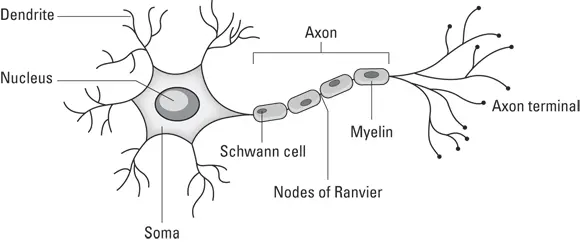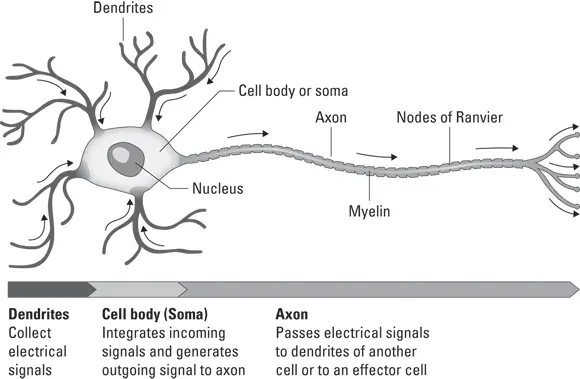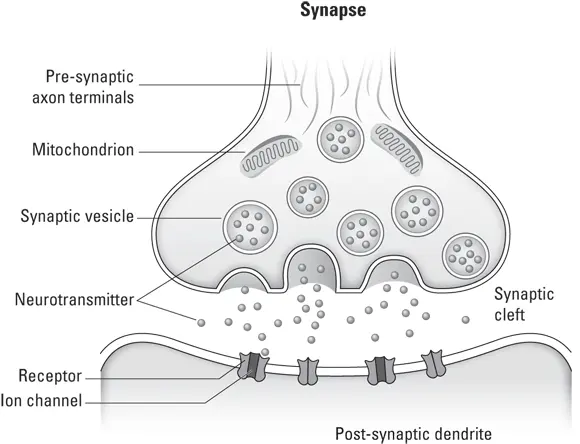1 ...8 9 10 12 13 14 ...24
Distinguishing the new brain from the old brain
Sometimes we hear references to new brain and old brain. However, that is not entirely accurate. When we refer to new brain or old brain, what we’re really talking about is how the different parts of the brain developed from an evolutionary, biological perspective. As mammals evolved over eons, the brain developed in increasing complexity from the bottom up; this means that as evolution moved forward, it progressed from the lower brain, including the upper brain stem, to the midbrain or limbic system (where the reward centers are), and finally to the latest development in our neurobiological evolution, the neocortex, or new brain.
By the way, it’s the prefrontal part of the cortex that helps inhibit the more animalistic survival drives that emerge from the more primitive limbic structures of the brain. And addiction is one of those hijacked drives piggybacked onto the limbic reward center gone awry.
Identifying the Parts of the Brain Involved in Addiction
Many areas of the brain are involved in addiction, and most of them are found in the limbic system. The interesting thing about addiction is that it isn’t simply about dopamine and the pleasurable feeling it provides. Numerous other systems are involved with addiction, including the endocrine system and certain hormones, as well as other neurotransmitters. The major areas of the brain involved in addiction include the ventral tegmental area, substantia nigra, amygdala, anterior cingulate, prefrontal cortex, hippocampus, and nucleus accumbens (also discussed in Chapter 3).
The nucleus accumbens is the major area in the limbic region of the brain; it’s a dense bundle of cells where a very large number of dopamine receptors reside. Dopamine is one of the major excitatory neurotransmitters responsible for pleasure and movement, and along with serotonin and norepinephrine, it has a lot to do with mood, reward, motivation, pleasure, and compulsion. ( Neurotransmitters are chemicals that enable nerve cells to communicate with one another.) The nucleus accumbens is the major traffic center for pleasure for most of the things we do, and as mentioned earlier, the brain is wired to make sure that certain behaviors associated with survival and thriving are pleasurable. It makes sense that nature would do this, as it increases our survival potential. Figure 2-1 shows the reward centers of the brain.

© John Wiley & Sons, Inc.
FIGURE 2-1:The reward centers of the brain.
 As you read the following sections, keep in mind that addiction involves borrowing those pleasure pathways meant for survival, so in an odd way, addiction is really a natural phenomenon gone awry — much like many medical conditions. It’s also important to note that the human brain and nervous system are always about checks and balances — where excitatory neurotransmitters are held in check by other inhibitory neurotransmitters such as GABA (gamma-aminobutyric acid).
As you read the following sections, keep in mind that addiction involves borrowing those pleasure pathways meant for survival, so in an odd way, addiction is really a natural phenomenon gone awry — much like many medical conditions. It’s also important to note that the human brain and nervous system are always about checks and balances — where excitatory neurotransmitters are held in check by other inhibitory neurotransmitters such as GABA (gamma-aminobutyric acid).
Examining the role of neurons and neurotransmitters
 Neurons are essentially the central part of the electrochemical connection process that makes up our nervous system; most of what we’re talking about with addiction involves the central nervous system, where neurons do their job. The central nervous system includes the brain and spinal cord. A neuron is made up of three major parts, as shown in Figure 2-2:
Neurons are essentially the central part of the electrochemical connection process that makes up our nervous system; most of what we’re talking about with addiction involves the central nervous system, where neurons do their job. The central nervous system includes the brain and spinal cord. A neuron is made up of three major parts, as shown in Figure 2-2:

© John Wiley & Sons, Inc.
FIGURE 2-2:The major parts of a neuron.
Soma, or cell body
Dendrites, which are the connecting strands that allow all neurons to interconnect
Axons, which are the fibers that act like electrical cables, connecting cell bodies to their dendritic terminals
Obviously, this is an oversimplified explanation, but suffice it to say that the power of the human brain derives not only from its constituent lobes and functional centers, but from how they all interconnect and communicate.
Neurotransmitters are the chemicals that allow neurons to communicate and connect with each other. Many neurotransmitters are in the central and peripheral nervous system, the major ones being dopamine, serotonin, norepinephrine, GABA, acetylcholine, glycine, and glutamate. The three that we frequently deal with in psychiatry, psychopharmacology, and addiction medicine are dopamine, serotonin, and norepinephrine, although we have recently begun targeting and integrating some of the other neurotransmitters as well.

© John Wiley & Sons, Inc.
FIGURE 2-3:A neuron firing.
The way in which neurons connect is quite amazing and is a combination of electricity and chemistry. Without getting into the weeds here, each neuron is typed to a specific neurotransmitter, and for the most part only uses that neurotransmitter for firing its respective neurons. Here’s how it works (see Figure 2-3):
An electrical signal moves through an axon (the electrical cable I mention earlier), and this signal travelling along the biological wire is called propagation. Some unique aspects of the axon help facilitate this propagation and make it as fast and efficient as possible; a special superfast coating exists along the axon called myelin, and this myelin sheath allows for a faster electrical transmission.Nature also uses other tricks to keep nerve signals moving along. Many axons also have built-in speed bumps called nodes of Ranvier (shown in Figure 2-2), which essentially allow the electrical signal to jump across the tips of these nodes to speed up transmission. This is in part what allows our nervous system to operate at lighting speed, and this leaping is called saltatory conduction.
That electrical signal comes barreling down the axon to a gate (actually, a gap) called a synapse. When it reaches the synapse (or gap), a seemingly magical thing occurs: The electrical signal is converted to a chemical one by facilitating an action potential that commands the presynaptic membrane (one end of the axon) to release its store of the associated neurotransmitter. This transmitter is then taken up (the term is uptake ) into the post-synaptic receptor and then converted back to an electrical signal; this nerve conduction process occurs millions of times a second. (See Figure 2-4.)
The leftover neurotransmitter that is not taken up is then either biodegraded (absorbed) or taken back up ( reuptake ) by the pre-synaptic receptor for later use.

© John Wiley & Sons, Inc.
FIGURE 2-4:Inside a synapse.
 Antidepressants, particularly selective serotonin reuptake inhibitors (SSRI), prevent the reuptake of serotonin. This allows more serotonin to be available, which, in theory, can elevate mood and help alleviate depression.
Antidepressants, particularly selective serotonin reuptake inhibitors (SSRI), prevent the reuptake of serotonin. This allows more serotonin to be available, which, in theory, can elevate mood and help alleviate depression.
Читать дальше


 As you read the following sections, keep in mind that addiction involves borrowing those pleasure pathways meant for survival, so in an odd way, addiction is really a natural phenomenon gone awry — much like many medical conditions. It’s also important to note that the human brain and nervous system are always about checks and balances — where excitatory neurotransmitters are held in check by other inhibitory neurotransmitters such as GABA (gamma-aminobutyric acid).
As you read the following sections, keep in mind that addiction involves borrowing those pleasure pathways meant for survival, so in an odd way, addiction is really a natural phenomenon gone awry — much like many medical conditions. It’s also important to note that the human brain and nervous system are always about checks and balances — where excitatory neurotransmitters are held in check by other inhibitory neurotransmitters such as GABA (gamma-aminobutyric acid).


 Antidepressants, particularly selective serotonin reuptake inhibitors (SSRI), prevent the reuptake of serotonin. This allows more serotonin to be available, which, in theory, can elevate mood and help alleviate depression.
Antidepressants, particularly selective serotonin reuptake inhibitors (SSRI), prevent the reuptake of serotonin. This allows more serotonin to be available, which, in theory, can elevate mood and help alleviate depression.










